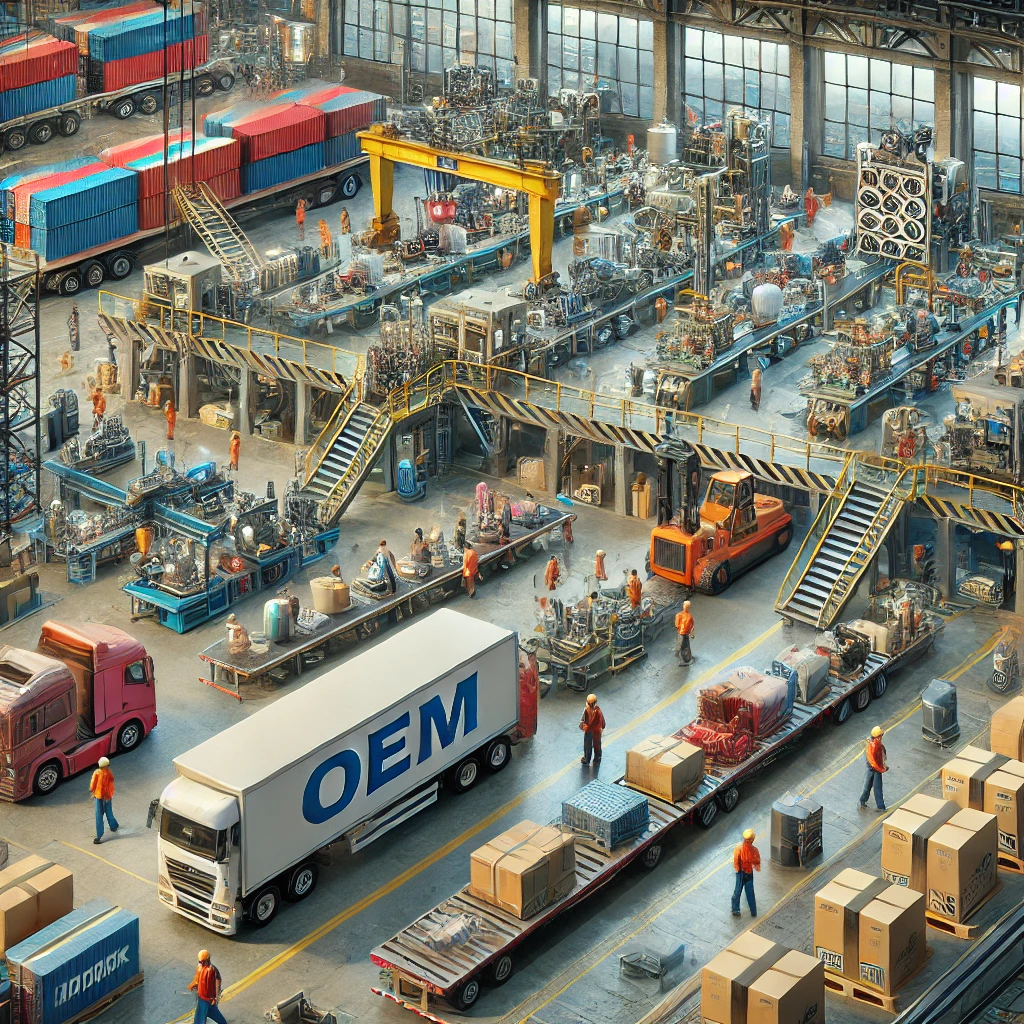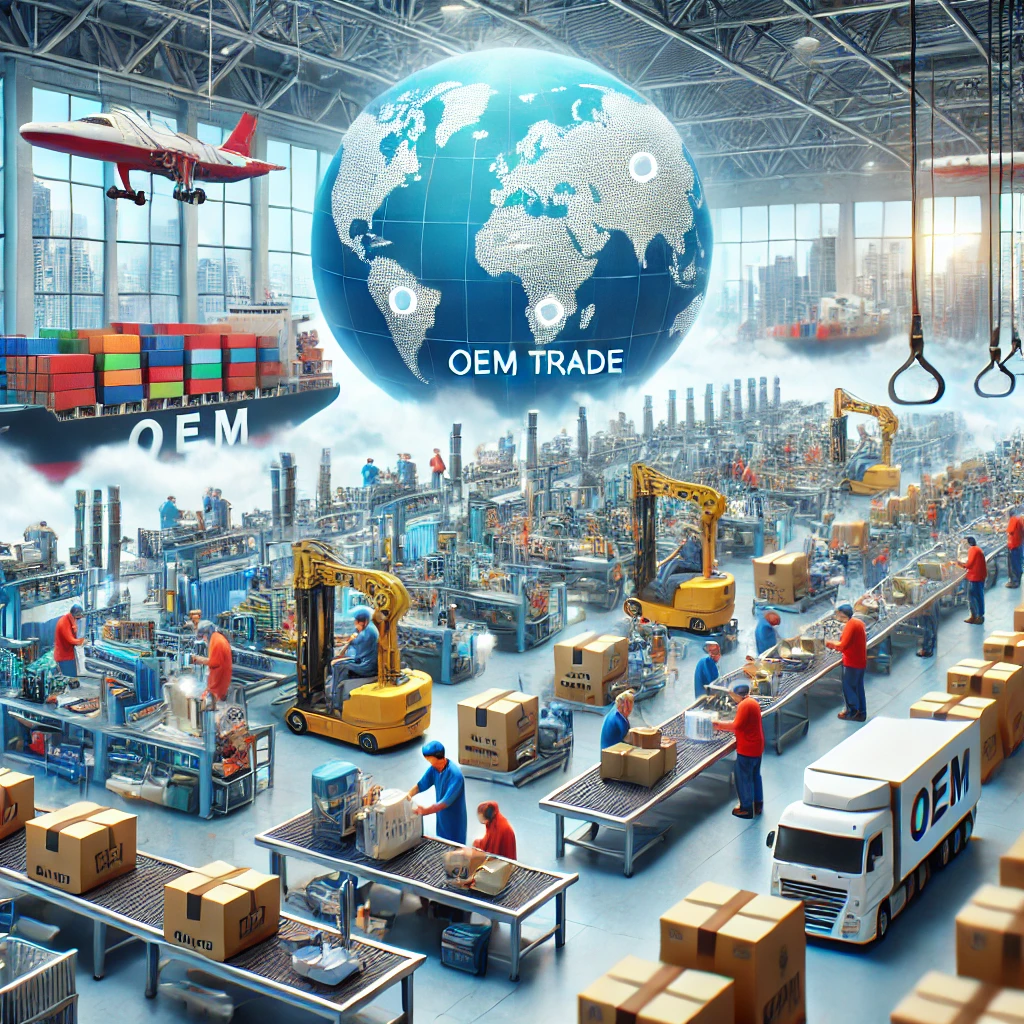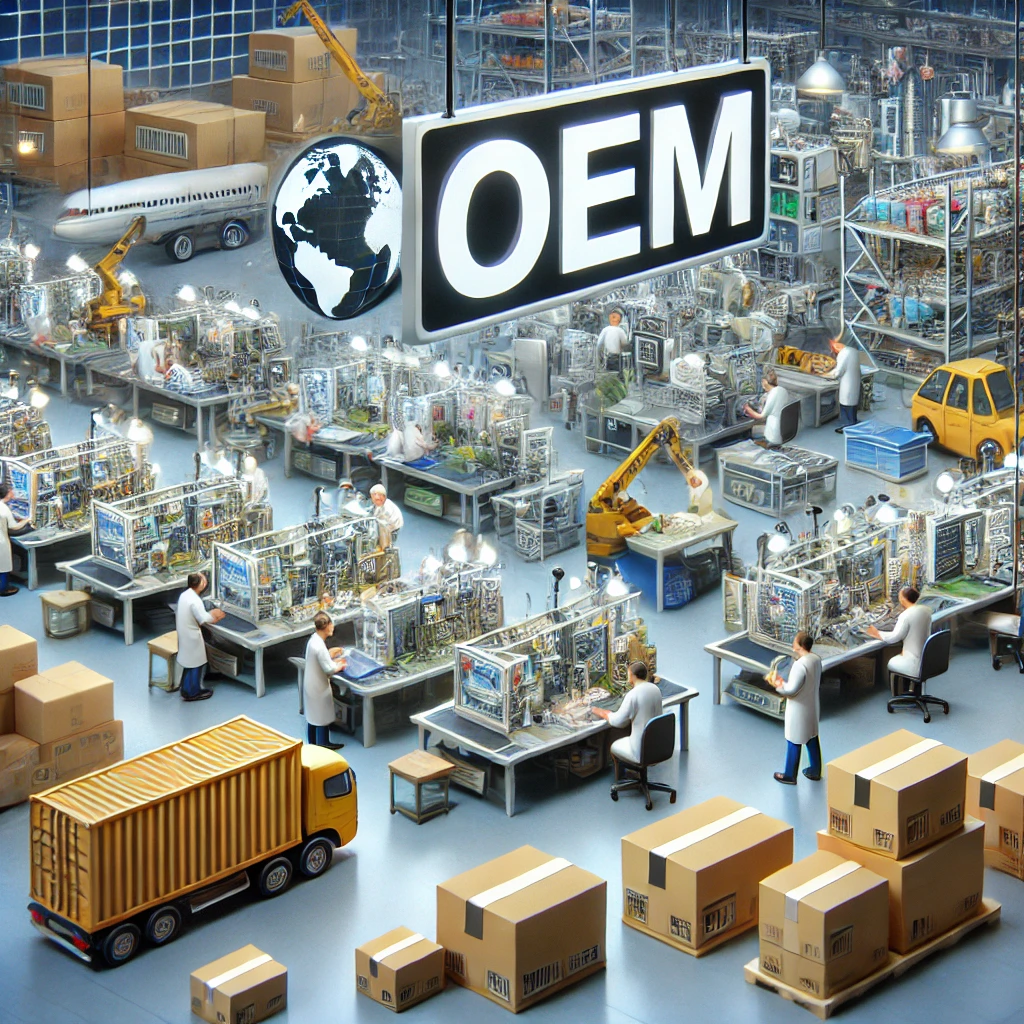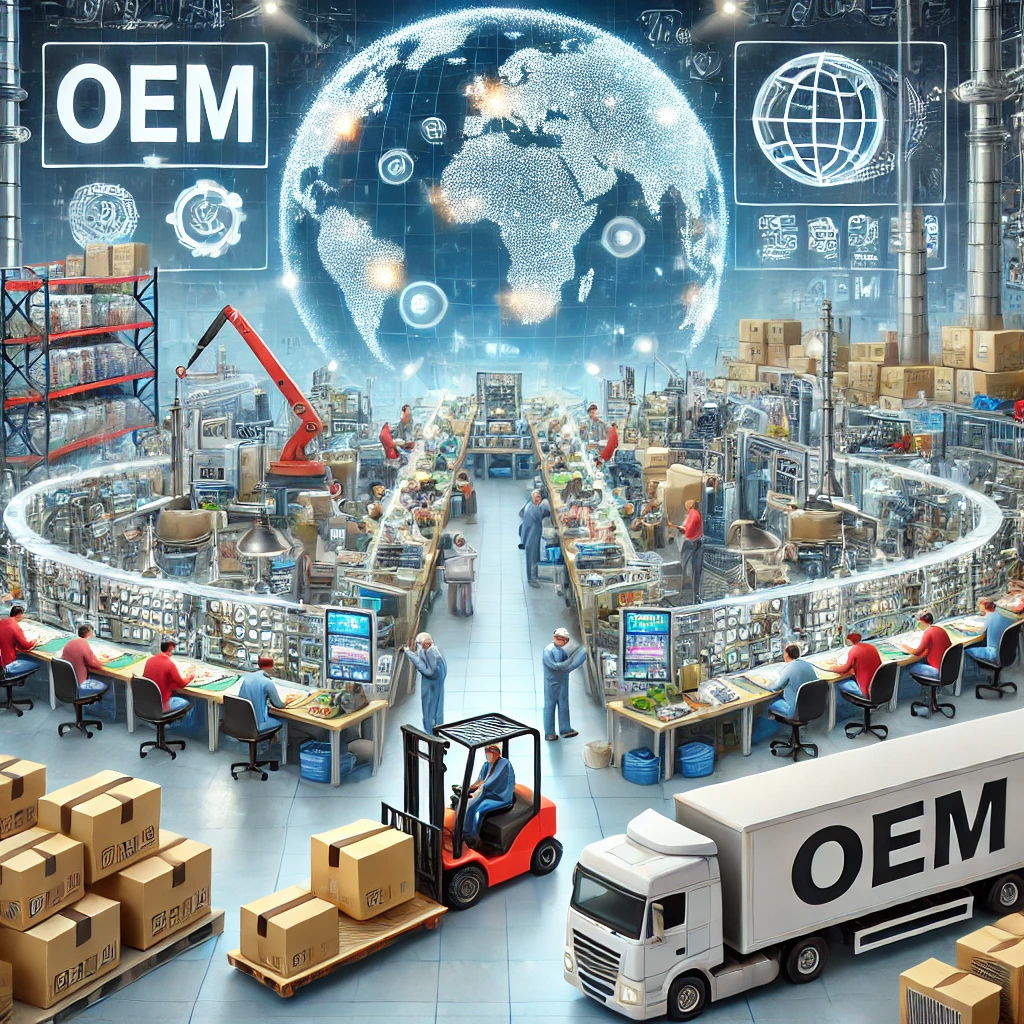OEM Trade: Understanding the Backbone of Global Manufacturing and Commerce

What is OEM Trade?
OEM stands for Original Equipment Manufacturer. OEM trade refers to the business-to-business (B2B) transactions where one company manufactures products or components that are then marketed and sold by another company under its own brand name.
Key Aspects:
- Manufacturing for other brands
- Customization according to client specifications
- Often involves international partnerships
- Crucial for global supply chains
The Importance of OEM Trade in Global Commerce
Become an integral part of international business, offering several advantages:
- Cost Efficiency: Companies can outsource manufacturing to reduce production costs.
- Specialization: OEMs can focus on their core competencies in manufacturing.
- Global Reach: Brands can expand their product lines without significant investment in manufacturing facilities.
- Innovation: Collaboration between OEMs and brands can lead to product improvements.

OEM Trade vs. ODM Trade
While often confused, OEM (Original Equipment Manufacturer) and ODM (Original Design Manufacturer) are distinct concepts:
- OEM: Manufactures according to the client’s specifications.
- ODM: Designs and manufactures products that are then rebranded by the client.
Understanding this difference is crucial for businesses engaging in international trade solutions.
The Role of OEM Clients in the Trade Process
OEM clients, typically brand-name companies, play a vital role in the process:
- Product Specification: Providing detailed requirements for manufacturing.
- Quality Control: Ensuring the OEM meets required standards.
- Branding and Marketing: Selling the products under their own brand.
- Distribution: Managing the supply chain and product delivery to end consumers.
OEMs Trade: A Global Perspective
The plural form “OEMs trade” emphasizes the collective impact of multiple Original Equipment Manufacturers on global commerce:
- Industry Clusters: Regions specializing in specific types of OEM production.
- Trade Balances: Significantly influences import/export figures of many countries.
- Economic Interdependence: Creates strong economic ties between nations.

Challenges in OEM Trade
While offers many benefits, it also comes with challenges:
- Quality Control: Ensuring consistent quality across different manufacturers.
- Intellectual Property Protection: Safeguarding proprietary designs and technologies.
- Supply Chain Disruptions: Managing risks in global manufacturing networks.
- Cultural and Language Barriers: Navigating international business relationships.
International Trade Solutions
OEM trade is a key component of broader international trade solutions. These solutions encompass:
- Logistics Management: Coordinating the movement of goods across borders.
- Customs Compliance: Navigating import/export regulations and tariffs.
- Financial Services: Managing international payments and currency exchanges.
- Legal Support: Drafting and enforcing international contracts.

The Future of OEM Trade
As global commerce continues to evolve, so does the landscape:
- Digitalization: Increased use of digital platforms for OEM-client communication.
- Sustainability: Growing focus on environmentally friendly manufacturing practices.
- Reshoring: Some companies are bringing manufacturing closer to home markets.
- Automation: Implementation of AI and robotics in OEM manufacturing processes.
Best Practices for Engaging
For companies looking to engage in , consider these best practices:
- Clear Communication: Establish detailed specifications and expectations.
- Quality Assurance: Implement rigorous quality control measures.
- Relationship Building: Foster strong, long-term relationships with OEM partners.
- Continuous Improvement: Regularly review and optimize the OEM trade process.
Legal Considerations in OEM Trade
OEM trade involves complex legal considerations:
- Contracts: Detailed agreements covering all aspects of the manufacturing relationship.
- Intellectual Property Rights: Clear delineation of ownership and usage rights.
- Liability: Determining responsibility for product defects or recalls.
- Compliance: Adhering to international trade laws and regulations.
The Impact of Technology
Technology is reshaping OEM trade in several ways:
- 3D Printing: Enabling rapid prototyping and small-scale production.
- Internet of Things (IoT): Enhancing supply chain visibility and product traceability.
- Blockchain: Improving transparency and security in OEM transactions.
- Cloud Computing: Facilitating real-time collaboration between OEMs and clients.

OEM Trade and Economic Development
OEM trade plays a significant role in economic development, particularly for emerging economies:
- Job Creation: OEM manufacturing can provide employment opportunities.
- Technology Transfer: OEMs often bring advanced manufacturing techniques to new regions.
- Export Revenue: can be a major source of foreign exchange earnings.
- Industrial Upgrading: Countries can move up the value chain through OEM partnerships.
Conclusion: Navigating the Complex World
OEM trade is a fundamental aspect of modern global commerce, facilitating the production of a wide range of goods and components. From electronics to automotive parts, enables companies to leverage specialized manufacturing capabilities while focusing on their core competencies in design, marketing, and distribution.
As businesses continue to seek efficient and cost-effective ways to bring products to market, understanding the nuances of becomes increasingly important. Whether you’re a brand looking to outsource production or a manufacturer aiming to become an OEM, grasping the intricacies of this trade model is crucial for success in the global marketplace.
By embracing best practices, leveraging technology, and staying attuned to evolving trends, companies can harness the power of to drive innovation, expand their reach, and thrive in an increasingly competitive international business landscape.
Remember, is not just about manufacturing—it’s about forging strategic partnerships, navigating complex global supply chains, and adapting to the ever-changing demands of consumers worldwide. As such, it remains a critical component of international trade solutions, shaping the way products are conceived, produced, and delivered to markets around the globe.
